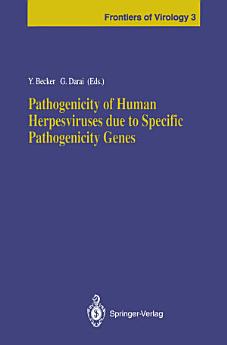Pathogenicity of Human Herpesviruses due to Specific Pathogenicity Genes
Yechiel Becker · Gholamreza Darai
Dec 2012 · Frontiers of Virology Book 3 · Springer Science & Business Media
Ebook
387
Pages
reportRatings and reviews aren’t verified Learn More
About this ebook
Six members of the Herpesviridae family are human pathogens, including herpes and 2 (HSV-I and 2), Epstein-Barr virus (EBV), varicella zoster simplex virus I virus (VZV), human cytomegalovirus (HCMV), and human herpesvirus 6 (HHV 6). Each of these viruses is capable of causing distinct diseases of varying severity in children, young adults, and the aged. The diseases range from infection of epithelial tissue to the infection of internal organs and white blood cells. A common feature of the six pathogenic human herpesviruses is their ability to latently infect different cell types in which the viral DNA is not integrated and is unable to express its pathogenicity. Reactivation of the herpesviruses is a result of cellular processes which reactivate viral genes, leading to virus progeny and to signs of infection. Due to their ability to become latent after initial infection, once the pathogenic herpesviruses infect children they are maintained throughout life, having the potential of cause various diseases upon reactivation.
Rate this ebook
Tell us what you think.
Reading information
Smartphones and tablets
Install the Google Play Books app for Android and iPad/iPhone. It syncs automatically with your account and allows you to read online or offline wherever you are.
Laptops and computers
You can listen to audiobooks purchased on Google Play using your computer's web browser.
eReaders and other devices
To read on e-ink devices like Kobo eReaders, you'll need to download a file and transfer it to your device. Follow the detailed Help Center instructions to transfer the files to supported eReaders.








